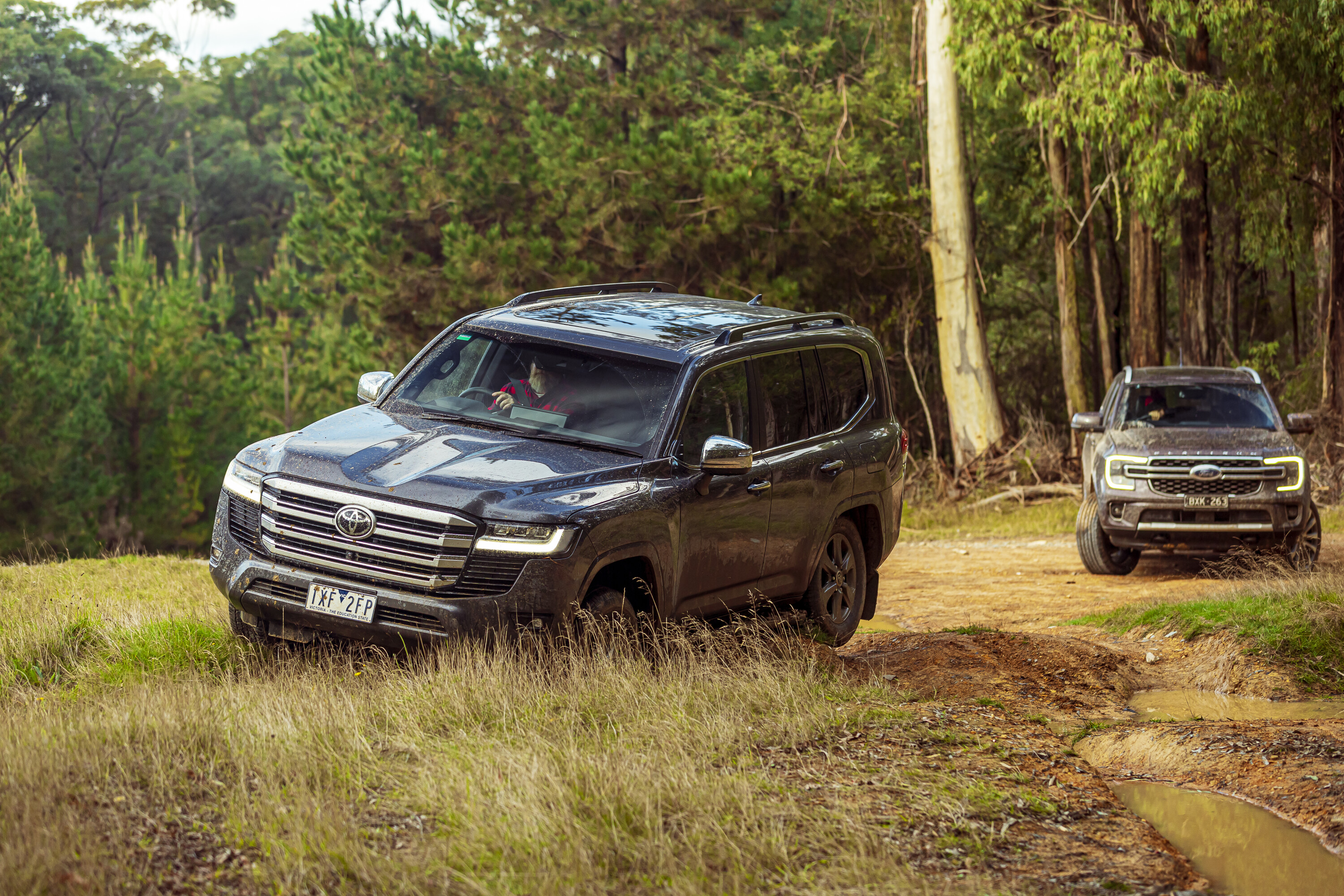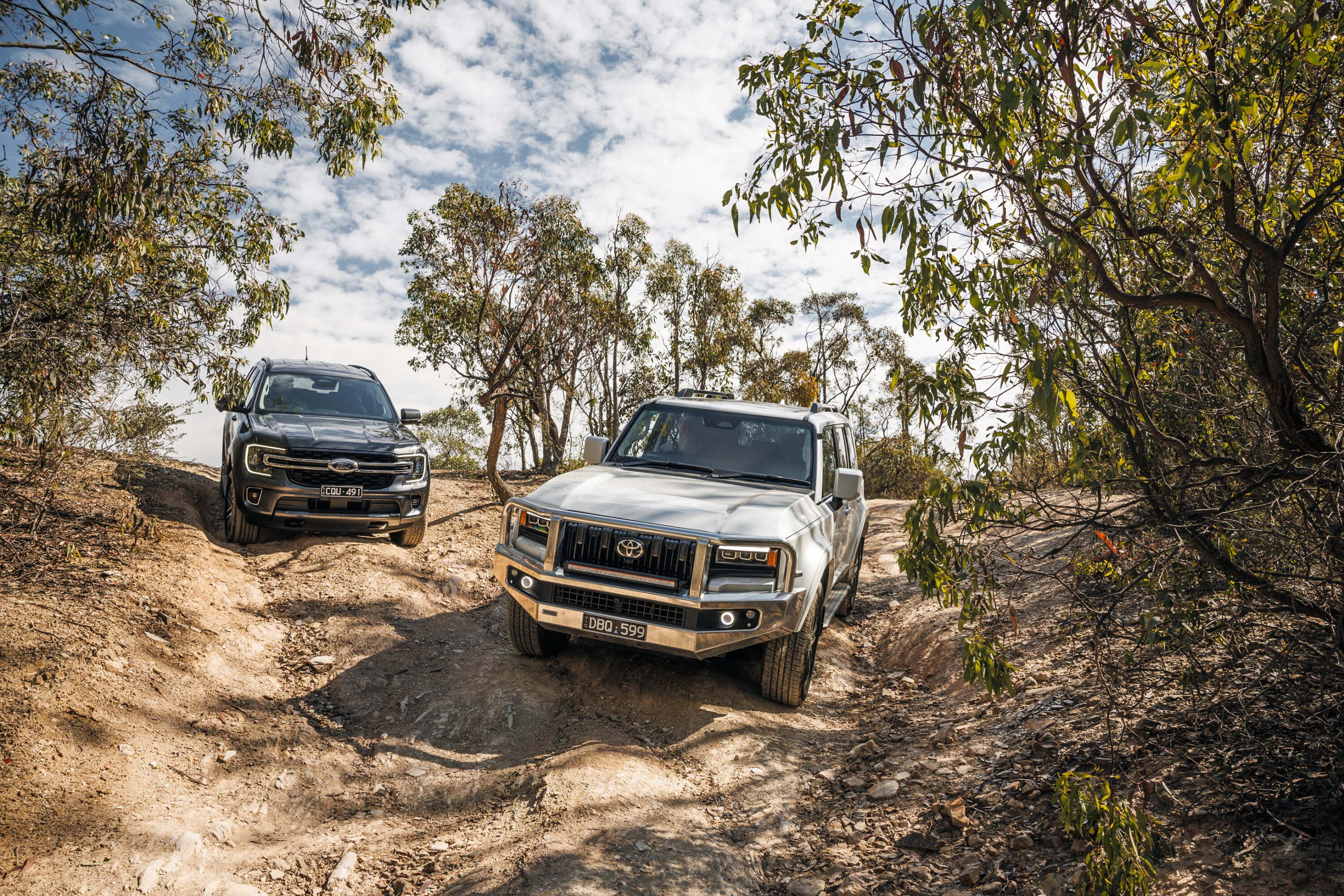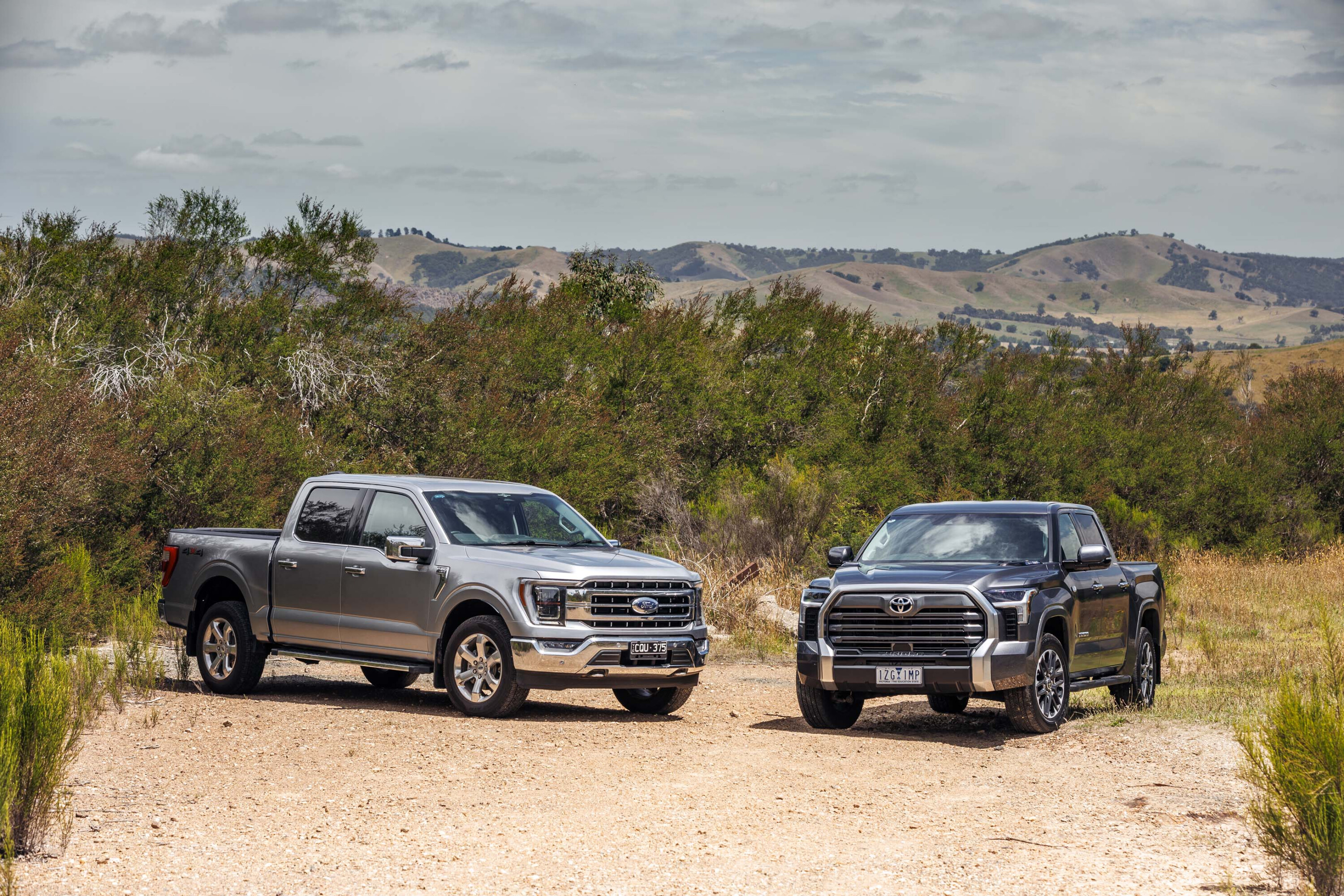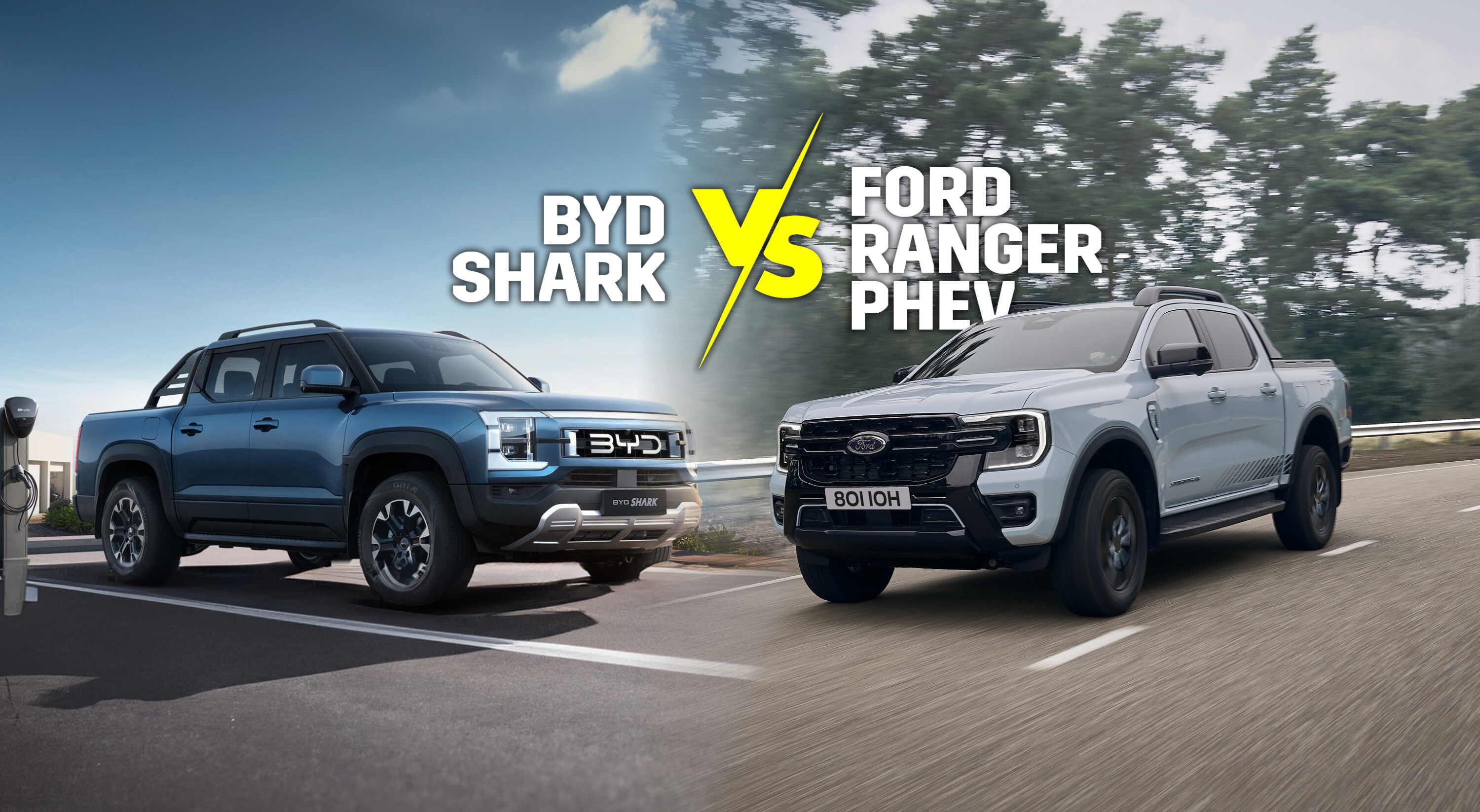Things we like
- EVEREST: Value for money; Refined engine; Rear cargo space
- LANDCRUISER: Unstoppable off-road ability; Refined and powerful drivetrain; High level of equipment
Not so much
- EVEREST: Fiddly manual gearshift buttons; Relatively high fuel consumption; Limited rear seat space
- LANDCRUISER: High purchase price; Annoying ADS intervention; Busy dashboard layout
With its step up in size and the addition of a smooth V6 diesel engine, does the Ford Everest now qualify as a genuine alternative to the venerable Toyota LandCruiser?
We lined up a top-of-the-range Everest Platinum with a LandCruiser Sahara to find out.
While they might now be closer in size and engine displacement, the Cruiser is still a far more costly vehicle to purchase than the Everest. The LC300 Sahara tested here starts at $133,881 plus ORC… and it’s not even the top of the range model. The GR Sport and Sahara ZX models both break the $140K mark!
The Everest Platinum, on the other hand, can be had for $77,535 +ORC, so there’s a lot of change there that could sway the mind of any potential buyer. Enough change to fully kit your Ford up with accessories and take an extended trip with it.
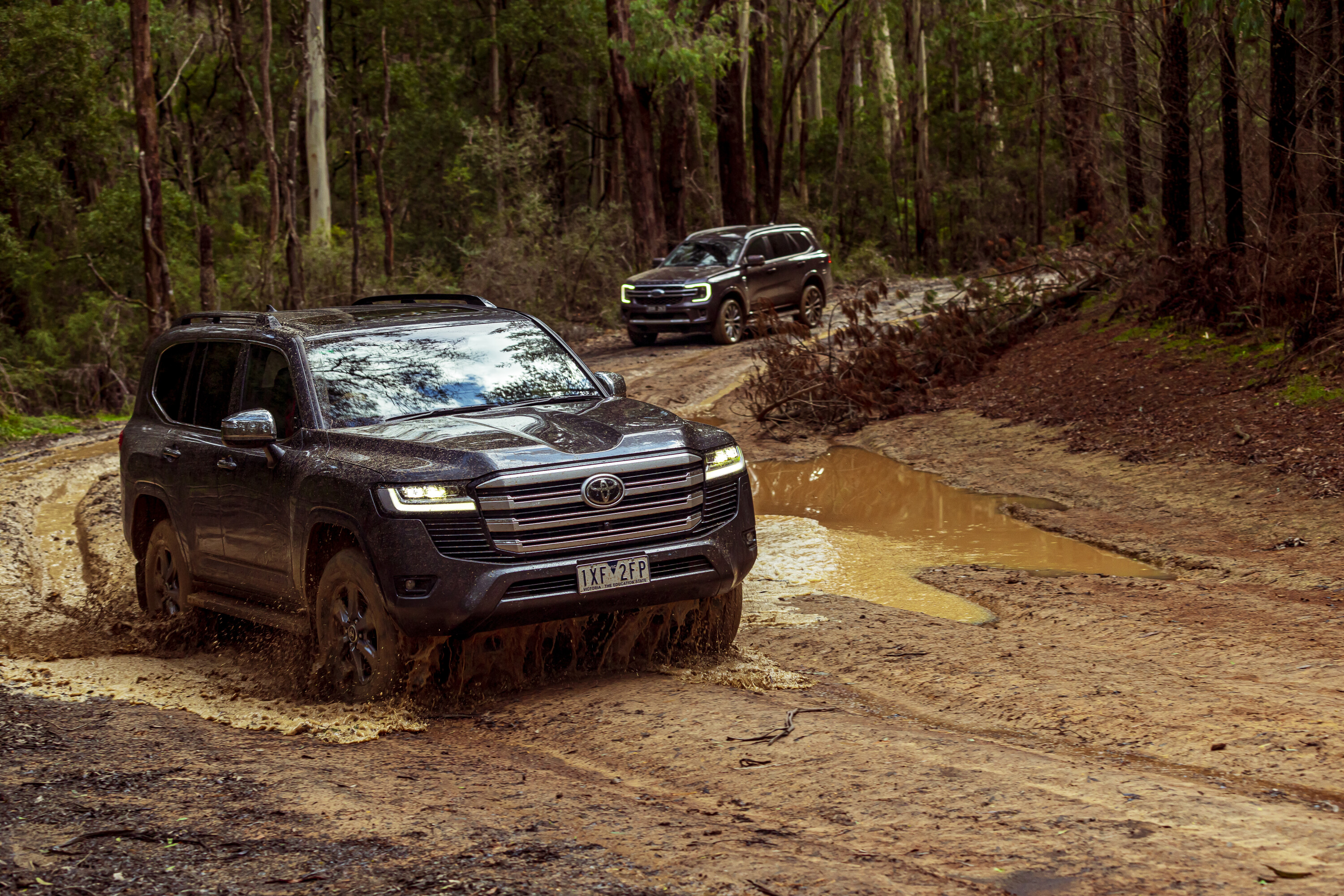
JUMP AHEAD
- Sizing up
- Powertrains
- Off-road performance
- Off-road specs
- Safety
- On-road performance
- Interior and equipment
- VERDICT
- Specs
Sizing up
While Everest has stepped up in size, it is still not quite as big as LandCruiser.
The Everest is only 6.6cm shorter than the LC300 bumper to bumper, and when it comes to width there’s only a few millimetres separating the two.
As is now the norm in the midsize and large 4×4 wagon segments, both of these vehicles offer seven seats, and when you slide inside the LandCruiser you’ll find 70mm more shoulder room in the second-row seat and 30mm more in the third row. The Cruiser also offers more leg room in the second and third rows but falls short on space available behind the third row.

The LC300’s cargo space with the third-row folded measures 1130 x 1250mm but with the third row in place leaves just 260mm for a small bag. Toyota quotes 1004-litres of cargo space behind the second row and 175-litres behind the third row.
Ford quotes 898-litres and 259-litres for the Everest’s cargo space which measures 1400mm x 1100mm; its extra length leaves you with a more usable 400mm behind the third-row while the narrower body accounts for the lower overall capacity.
The third-row seats are power folding in both of these high-spec models and only the Ford’s second row slides fore and aft to adjust leg room. Even so, the Cruiser has more second-row legroom while its driver’s seat space is infringed on by the extra-wide console.
Powertrains
The inclusion of the V6 engine in the Everest is a major step up from the four-cylinder in terms of capacity, performance and refinement.
The LandCruiser’s drop from a V8 to a V6 engine might be considered a downgrade by some, but it actually offers improved performance, refinement and importantly fuel economy.
Ford’s 3.0-litre, single turbo diesel V6 makes a claimed 186kW of power and 600Nm of torque but is out-muscled by the Toyota’s 3.3-litre twin turbo that produces claimed power and torque peaks of 227kW and 700Nm.
The Sahara’s 200-odd kilos of extra weight over the Platinum reins the power and torque advantages back and without lining the two cars up for a drag race you’d be hard pressed to pick the quicker of them.
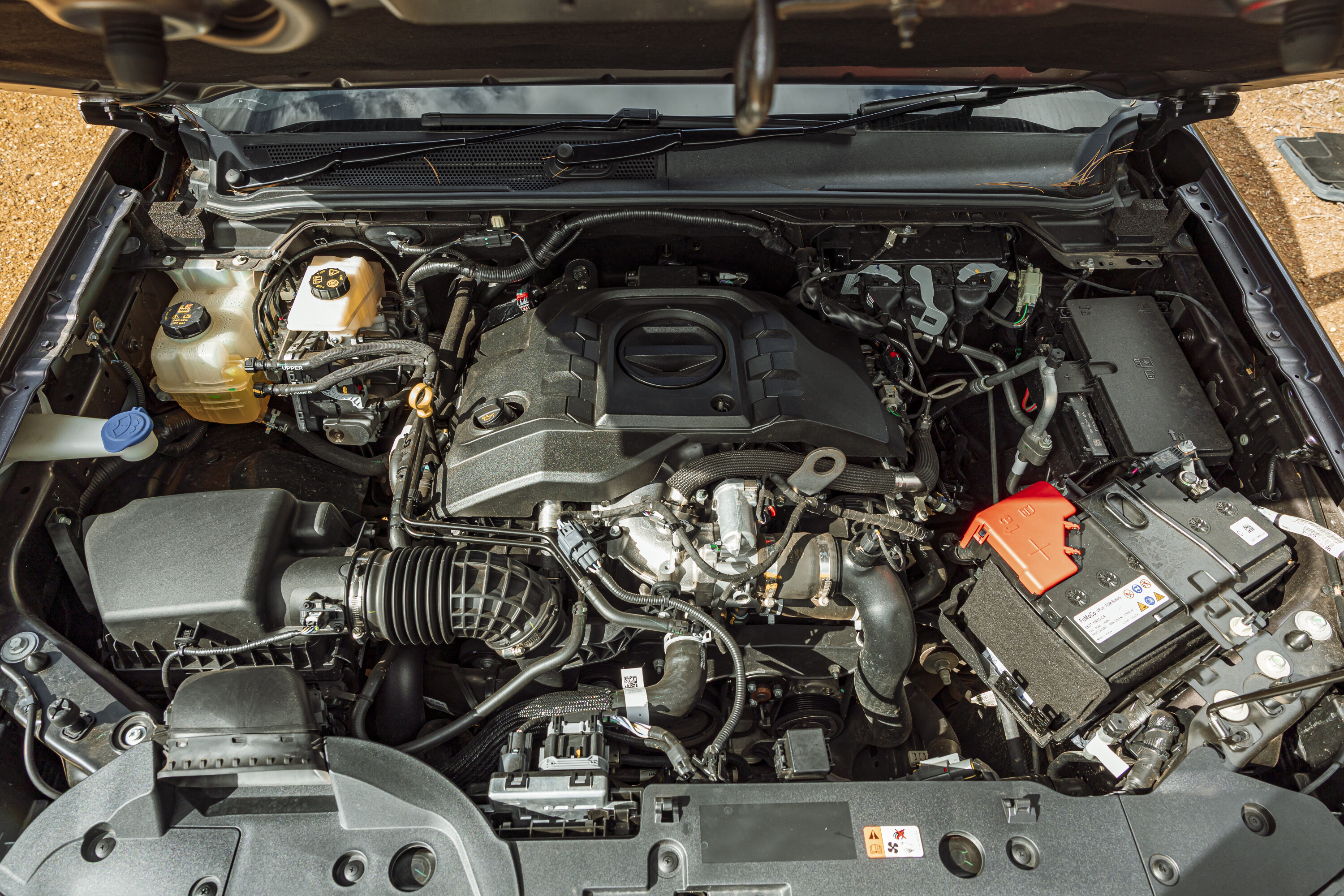
Both of the Ford and Toyota V6 engines deliver smooth and refined performance
Fuel consumption-wise, the Cruiser is officially rated at 8.9L/100km and the Everest 8.5L/100km, while out on test the Cruiser used 12.1L/100km and the Ford 13.8L/100k. This heavier fuel use by the Ford is in keeping with what we’ve found in the Ford Ranger with the same drivetrain.
The LandCruiser also wins the touring-range argument with its 110-litre tank capacity compared to Everest’s 80 litres. Interestingly, the LC300 has a smaller fuel-tank capacity than the models that preceded it, and even the Prado carries more fuel than its bigger stablemate!

Both of the Ford and Toyota V6 engines deliver smooth and refined performance that the inline four and V8 engines of the previous generations could never match. This is further aided by the slick 10-speed automatic transmissions in each of them.
I can’t find much to criticise about either transmission in terms of performance, but I much prefer the Toyota shifter with its separate gate for fore and aft manual shifting, ahead of the Ford shifter which uses little buttons on the side of the handle that aren’t as user friendly.
Off-road performance
The LandCruiser 300 uses the full-time, dual range 4×4 system with lockable centre differential that has served the nameplate so well since the 80 Series, and it still does a great job.
It’s backed up in the 300 by a driver-selectable rear locker and a drive mode selector with Auto, Dirt, Sand, Mud, Snow, and Rock modes.
We’ve found the LC300’s crawl control function to be very effective when negotiating tricky, low-speed terrain where the computer can apply tiny amounts of throttle and manage the torque transfer to get you over the terrain. While crawl control is technology that works and is useful, I haven’t found a situation yet where I would use the Cruiser’s turn-control function; it’s more of a circus trick.
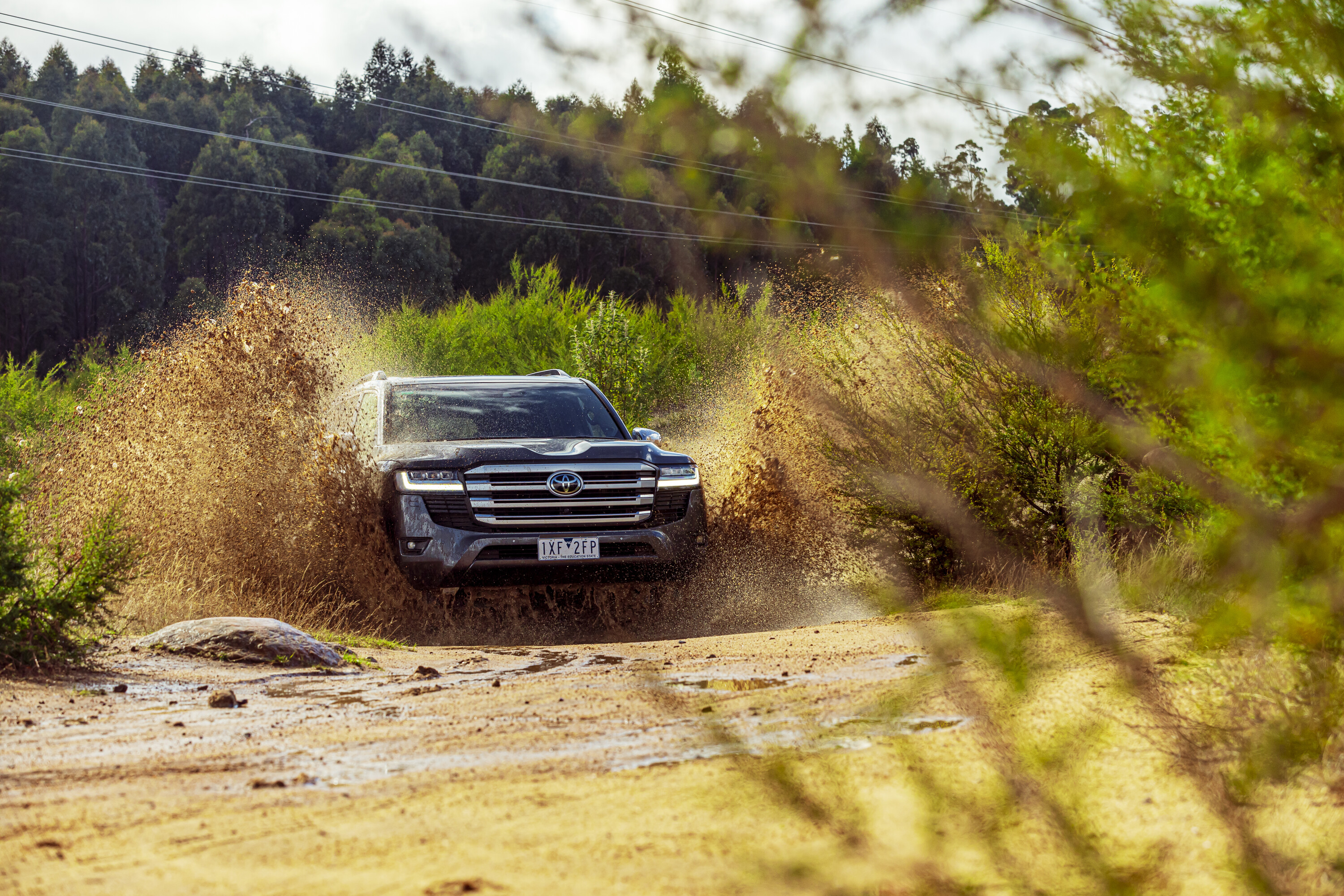
The Everest uses a full-time dual-range 4×4 system with a more sophisticated centre diff controlled by clutches that can vary the drive front to rear and lock up as required. Like the Cruiser it is backed up by a driver-selectable rear differential lock, and it has a multi-terrain system with Eco, Normal, Sand, Slippery, Tow/haul and Mud/Ruts driving modes.
The Ford’s active centre differential allows more significant driveline changes in each mode than the Toyota does due to the way it can work differently for each setting. But at least when you lock the Toyota’s centre diff you know that it is locked 50:50, and not being controlled by a computer, and this is important when driving off road and in steep terrain.
Much of the LC300’s chassis and suspension set-up and tuning were also conducted in Australia by Australian engineers over a range of roads and conditions
The Everest Platinum’s 21-inch wheels and 45 series tyres are less than ideal for off-road use however you can option this model with 18-inch wheels and tyres as fitted to the lower grades in the range. Surprisingly, the 21s don’t seem to have a negative effect on the ride quality, which is something you would usually associate with such low-profile tyres. This is testament to the excellent job that Ford Australia has done with tuning the ride and handling of the T6 platform on which the Everest is built.
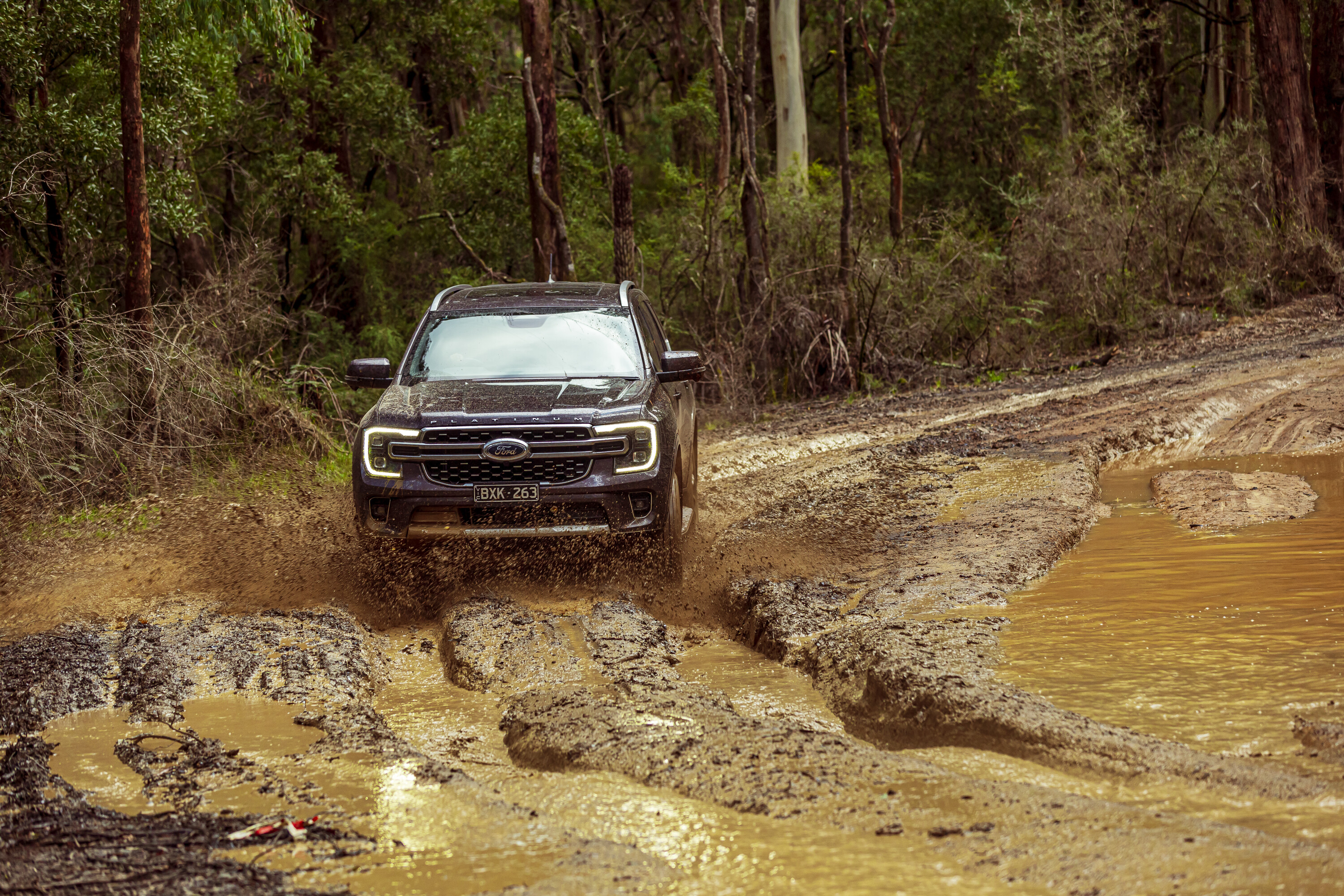
It must also be said that much of the LC300’s chassis and suspension set-up and tuning were also conducted in Australia by Australian engineers over a range of roads and conditions, and this local input shows in the way it handles and performs on rough roads and corrugations.
The LandCruiser Sahara rides on more sensible 18-inch alloy wheels wearing 65 section tyres. The Sahara does not have a tyre pressure monitoring system while the Everest has a very good TPMS that displays the tyres’ pressures.
Off-road specs
| Ford Everest Platinum | Toyota LandCruiser 300 Sahara | |
|---|---|---|
| Approach angle | 30.2u00b0 | 32u00b0 |
| Rampover angle | 21.9u00b0 | 21u00b0 |
| Departure angle | 25u00b0 | 25u00b0 |
| Ground clearance | 226mm | 235mm |
| Wading depth | 800mm | 700mm |
Safety
As modern family wagons, both the LandCruiser and Everest are loaded with all the latest safety tech.
This includes ABS, electronic stability control, electronic brake-force distribution, hill descent control, electronic traction control, roll-over mitigation, rear cross traffic alert, lane keeping assist and warnings, blind spot monitors, airbags that run through to the third-row seats, 360° cameras, trailer-sway control and autonomous emergency braking both forward and rearward.
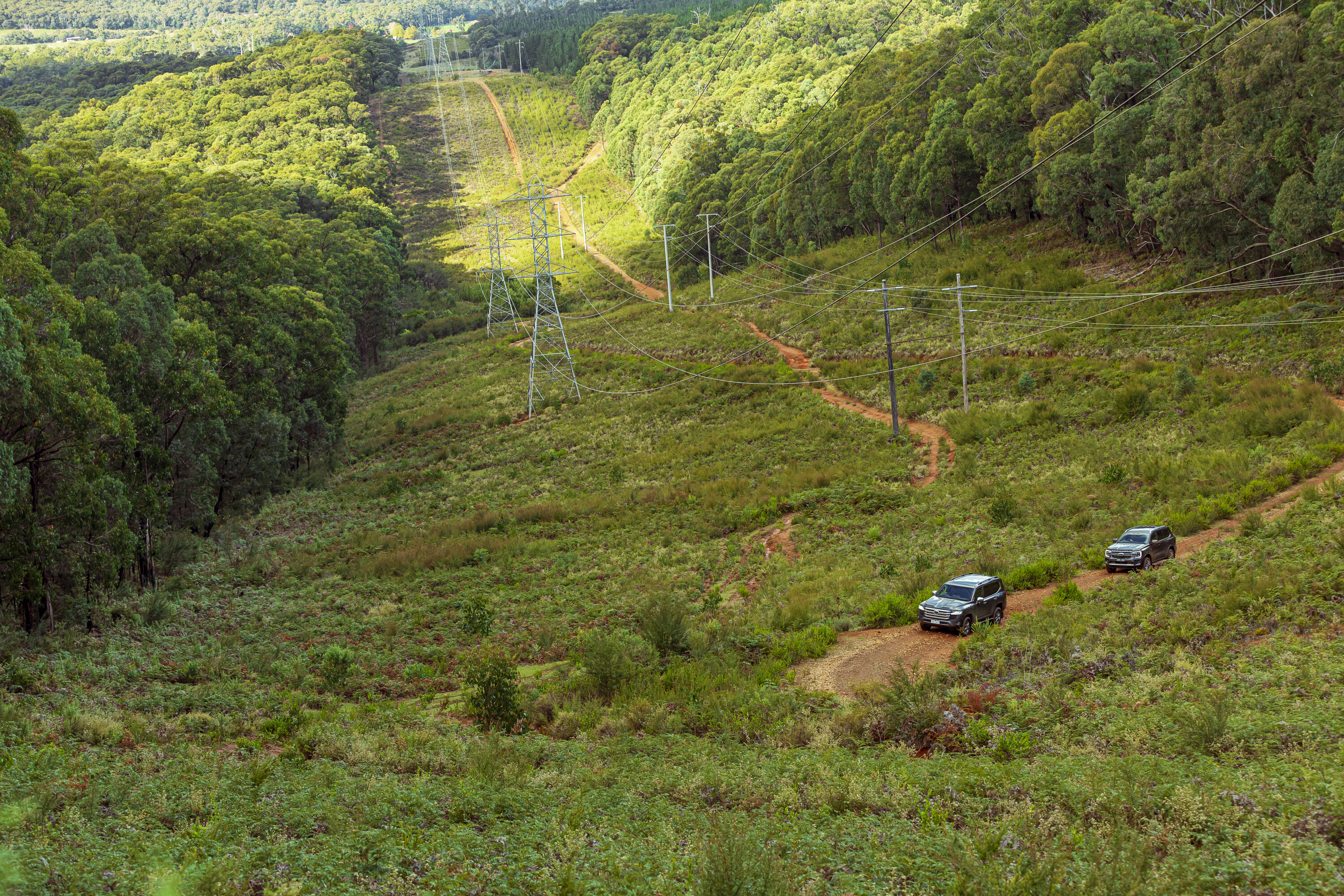
With its TPMS and the blind spot monitor’s ability to adapt to your trailer when towing, the Everest probably exceeds the Sahara on safety features, but both are five-star rated.
The Everest’s lane keeping systems are less intrusive than those on the LandCruiser too; the Sahara reacts quite violently when you wander in your lane while its lane centering, which comes on when you use cruise control. It is annoying as it feels like it’s constantly fighting your hands on the wheel. A small gripe on what is an otherwise well-polished and well equipped vehicle.
On-road performance
Ford’s V6 engine is more refined and quieter but it doesn’t lack in performance
Both of these vehicles are big wagons but the Cruiser really feels the bigger of the two. It has that large LandCruiser feel even though it’s not really that much bigger than the Everest.
The Toyota V6 engine displays more of a diesel rattle – without being noisy or offensive and this adds to the big-truck feeling of the Cruiser. The Toyota isn’t as taught on its chassis either and it wallows in a way that will be familiar to any LandCruiser owner.
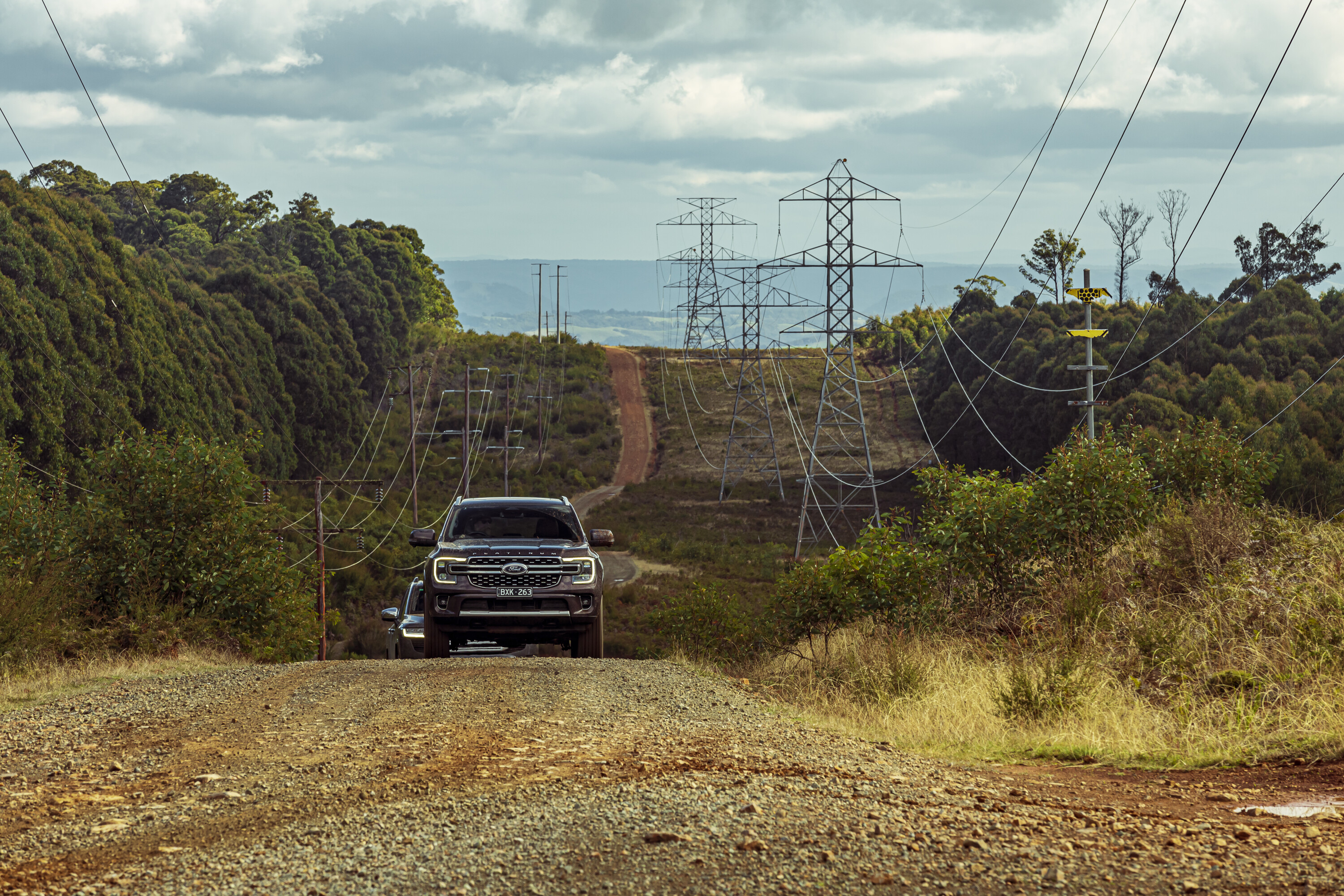
Ford’s V6 engine is more refined and quieter but it doesn’t lack in performance. You still know it’s a diesel engine but it puts out a very different sound to the Toyota.
As mentioned, the Everest rides tighter on its coil spring suspension and feels more pinned and precise as a result. Neither of these 4x4s could be called sporty but the Ford would closer fit the term than the Toyota
Interior and equipment
Both of these high-spec wagons are fully loaded with comfort and convenience features.
The Sahara probably has the wood over the Titanium here thanks to its heated and vented rear seats, rear-seat entertainment system, and ice box in the centre console, among other extras, but there is a sizeable price difference between the two as well.

Both wagons have power folding third-row seats and power tailgates, plus premium sound systems. In The Cruiser it’s a JBL system featuring 14 speakers, while the Ford features a Bang & Olufsen system with 12 speakers. They both have Apple Carplay and Android Auto, however only the Everest allows you to hook up to these wirelessly, while the Cruiser requires a cable connection.
These off-road-capable wagons are luxury 4x4s in every sense of the term
Both of these wagons have a wireless charging pad for compatible phones. The Ford’s 12-inch portrait style A/V screen also trumps the nine-inch screen in the Cruiser, and it’s a similar story in the gauge binnacle where the Sahara gets a 4.2-inch TFT display and conventional looking gauges while the Everest Platinum has a configurable 12-inch screen. That said, the Toyota’s simpler gauge design is easier to read than the Ford’s busy electronic screen.
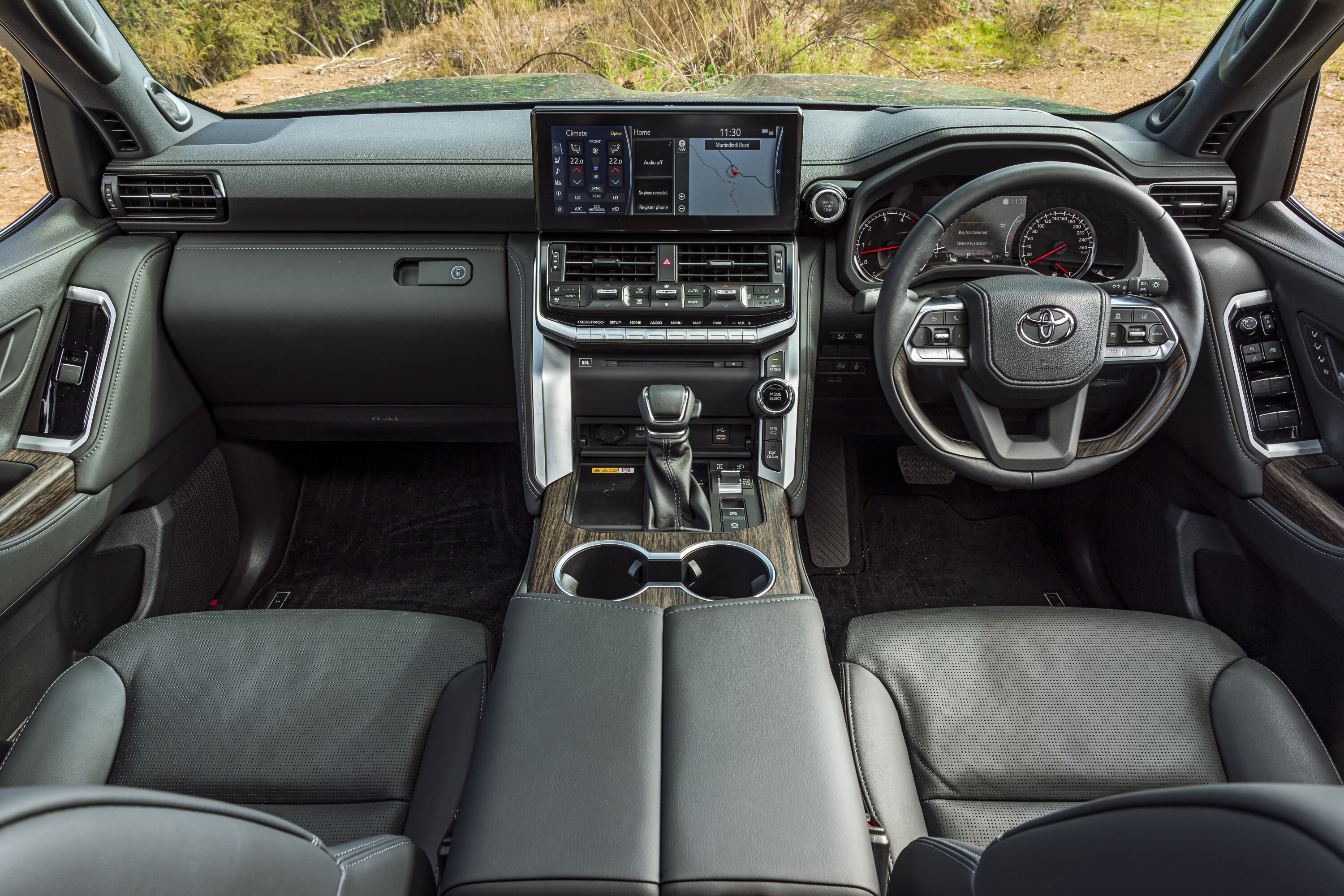
Leather-accented seats are standard on all three rows, however only the Sahara’s are real leather, and not synthetic. The front seats in both vehicles are heated and ventilated.
Toyota air conditioning is the best in the business and the LandCruiser Sahara takes it to the max with a four-zone system with separate control for the second-row seats. The Everest Platinum gets a two-zone air conditioner but also has controls in the second row. Both have vents running through to the rear seat passengers.
Make no mistake, these off-road-capable wagons are luxury 4x4s in every sense of the term.
VERDICT
The LandCruiser and Everest are very similar in size, design and execution but they do their thing in slightly different ways.
The Cruiser maintains its big-rig feeling while the Everest feels nimbler. They both do the seven-seater thing well and are capable off-roaders in standard trim, with plenty of kit available for them should you want to boost that capability.
Both of these big wagons offer a 3500kg towing capacity and they will haul that load better than any of the popular double-cab utes. The payloads are neck and neck while the Cruiser range has the higher GCM even though that is eaten into a bit with the vehicle’s higher weight.
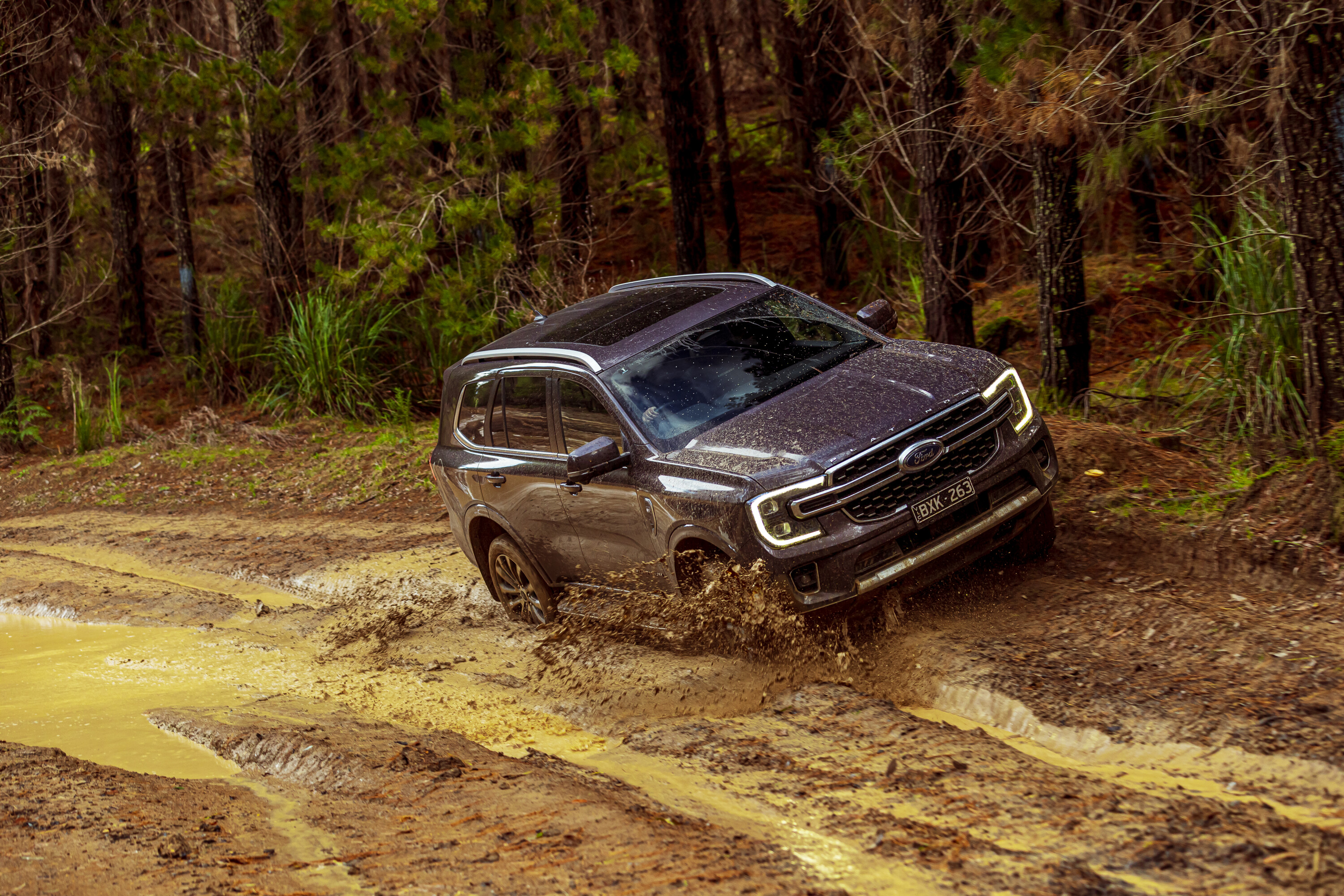
The big difference between the two vehicles is the price, and the $56,346 disparity between the two will be the deciding factor for many potential buyers. If your budget maxes out at $80K then the decision has been made for you… and it wouldn’t be a bad call. You couldn’t even buy a new base-model GX LandCruiser for that money.
Even if you did have $100K or more to spend, then the money saved by buying the Everest Platinum would more than kit out your rig and take you on a lap of the country, hitting all the bucket-list off-road destinations.
If the LandCruiser was priced at $100K it would be a closer battle but as it stands the Everest Platinum (fitted with the optional 18s) takes this title fight.
Scores
Ford Everest Platinum: 9/10
Toyota LandCruiser 300 Sahara: 8.5/10
Specifications
| Ford Everest Platinum | Toyota LandCruiser 300 Sahara | |
|---|---|---|
| Price | $77,535 +ORC | $133,881 +ORC |
| Engine | V6 dieselu00a0 | V6 diesel |
| Capacity | 2993cc | 3346cc |
| Max power | 184kW @3250rpm | 227kW @ 4000rpm |
| Max torque | 600Nm @ 1750-2250rpm | 700Nm @ 1600-2600rpm |
| Transmission | 10-speed automatic | 10-speed automatic |
| 4×4 system | Full time with high and low range. Selectable 4WD. Selectable rear diff lock | Full time with high and low range. Selectable rear diff lock |
| Crawl ratio | 51.01:1 | 43.73:1 |
| Construction | Body on frame, 5-door wagon | Body on frame, 5-door wagon |
| Front suspension | IFS with coils | IFS with coils |
| Rear suspension | Live axle with coils and Watts link | Live axle with coils and Panhard rod |
| Tyres | 275/45R21 on alloy wheels | 265/65R18 on alloy wheels |
| Weight | 2501kg (kerb) | 2630kg (kerb) |
| GVM | 3150kg | 3280kg |
| GCM | 6250kg | 6750kg |
| Towing capacity | 3500kg | 3500kg |
| Payload | 649kg | 650kg |
| Seats | 7 | 7 |
| Fuel tank | 80L | 110L |
| ADR fuel consumption | 8.5L/100km | 8.9L/100km combined |
| On-test fuel consumption | 13.8L/100km | 12.4L/100km |
Our latest gear guides
-
Suspension
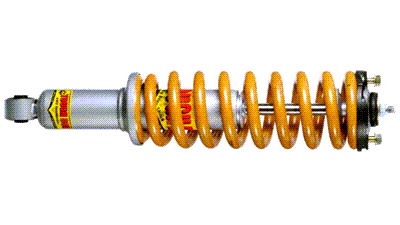
-
Lights
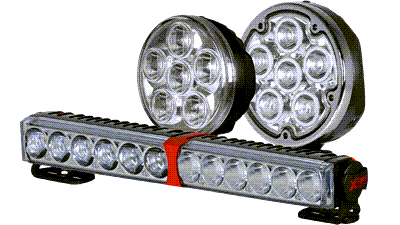
-
Canopies
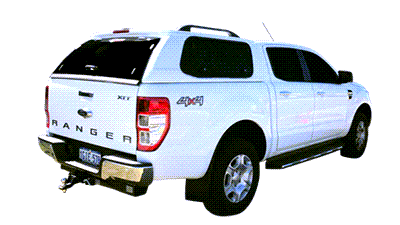
-
Bullbars
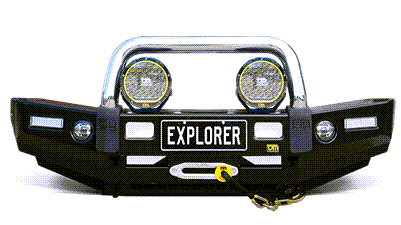
-
Roof Racks
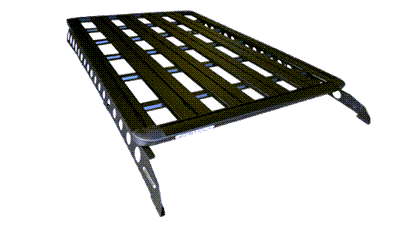
-
Recovery Gear
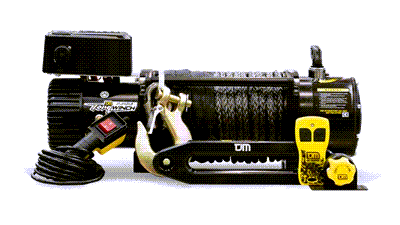
-
Storage
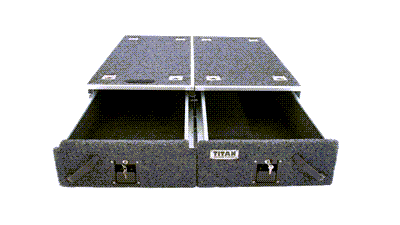
-
Tools
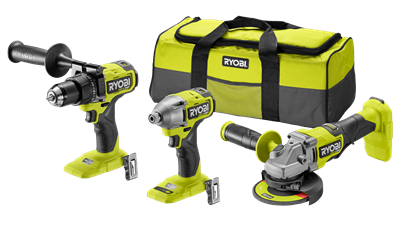
-
Camping
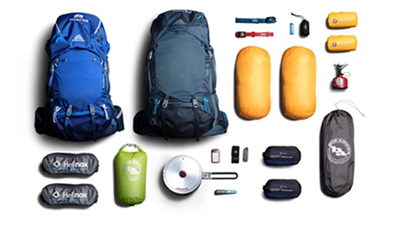
-
Tents & Awnings
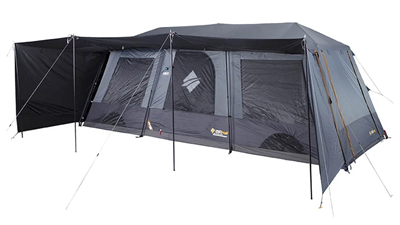
-
Portable Power
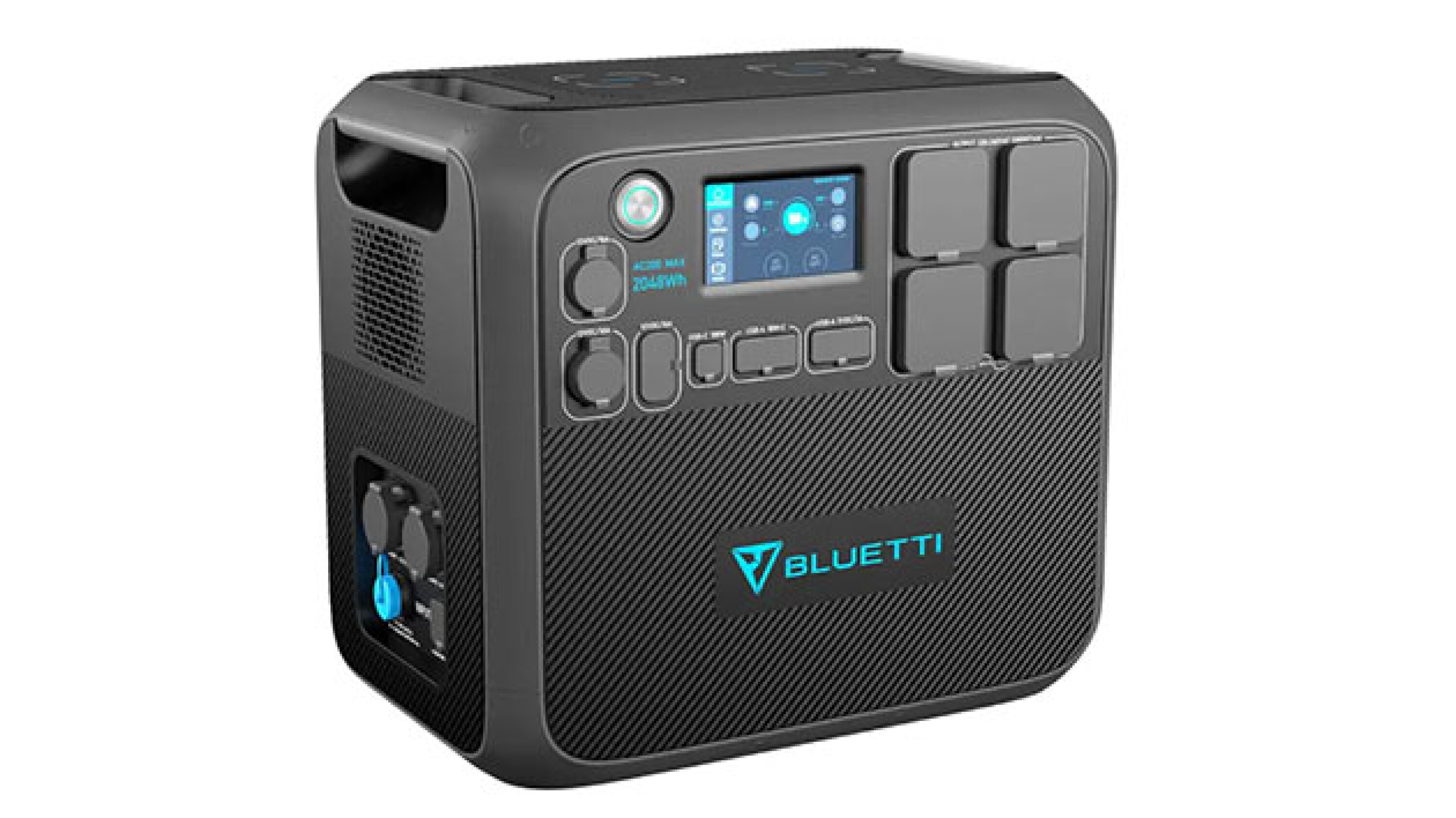
Things we like
- EVEREST: Value for money; Refined engine; Rear cargo space
- LANDCRUISER: Unstoppable off-road ability; Refined and powerful drivetrain; High level of equipment
Not so much
- EVEREST: Fiddly manual gearshift buttons; Relatively high fuel consumption; Limited rear seat space
- LANDCRUISER: High purchase price; Annoying ADS intervention; Busy dashboard layout


